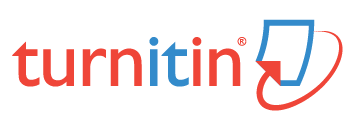IMPLEMENTASI “PAIKEM” DENGAN “COLLABORATIVE LEARNING” (Satu alternatif memecahkan masalah belajar PPKn)
Kata Kunci:
PAIKEM, Collaborative LearningAbstrak
PAIKEM is active, inspirational/Interactive/Innovative, Critical/Creative, Effective, and Fun Learning. PAIKEM based learning helps students develop the ability to think high stage, critical thinking and creative thinking (critical and creative thinking). Collaborative learning involves a combination of hard work or intellectual effort by students working in groups to get a sense, the solution, meaning or create a product, and the overall exploration centered on the student and not the teacher's explanation is simple or detailed. By using collaborative learning, implementation PAIKEM as expected by teachers and public education will be realized and seen the results during the learning process takes place and when the student has been implementing the learning, it will appear on the behavior of students everyday when they exist in the school environment , families and communities, the students are critical, creative, active, interactive, innovative, and able to cooperate with anyone.
Unduhan
Referensi
Apriono, D. 2009. Implementasi Collaborative Learning dalam Meningkatkan Pemikiran Kritis Mahasiswa.Jurnal Prospektus UNIROW Tuban, 7 (1), 13-20.
Ardhana, W.1997. Pandangan Konstruktivistik tentang Pemecahan Masalah Belajar. Makalah Seminar TEP PPS IKIP Malang.
Arnseth, H.C dan Sten Ludvigsen. 2000. Collaboration and Problem Solving in Distributed Collaborative Learning. University of Oslo Barbara Wasson, Anders Mørch University of Bergen: http://www.ll.unimaas.nl/euro- cscl/Papers/8.doc. Diakses 8 Desember 2008.
Brophy, J.,1997. Teaching problems students. New York: Gilford.
Brophy, J., 1998. Motivating Student to Learning. New York: Mc Graw- Hill.
Brown, Faith A. 2002. Collaborative Learning in the EAP Classroom: Students Perceptions. http://www.esp-world.info/articles17/ppf/collaborative learning.pdf.2002. diakses tanggal 2 Mei 2009.
Bruffe, K. 1995. Sharing our toys- Cooperative Learning versus Collaborative Learning. Change, Jan-Feb. 12 – 18.
Cabrera, AF., Nora, A., Crissman, Jl., Terenzini, P.T., Bernal, Elena M., & Pascarella, ET. 2002. Collaborative Learning: Its Impact on College Students Development and Diversity. Journal of College Students Development, 1 (43), 20-34.
Clark, Jill., & Baker, Trish. 2007. Collaborative learning in diverse groups: a New Zealand experience. http://www.isana.org.au/files/thurs
-c2-clark.pdf. diakses tanggal 12 April 2009.
Dahar, R.W. 1998. Teori-teori Belajar. Jakarta: Departemen Pendidikan dan Kebudayaan, Dirjrn Dikti P2LPTK.
Degeng, N.S. 1997. Asumsi dan Landasan Teoritik Disain Pembelajaran.Jurnal Teknologi Pembelajaran. 5 (1), 3.
Degeng N.S. 1999. Mencari Paradigm Baru Pemecahan Masalah Belajar dari Keteraturan Menuju Kesemrawutan. Pidato Pengukuhan Guru Besar IKIP Malang.
Dick. W. & Carey, L. 1985.“The Sistematic Design of Instruction.Second Edition”.Glenview. Illionis: Scot Foresman and Company.
Dillenbourg, P. 1999. What do you mean by collaborative learning?. In Dillenbourg P (Ed) Collaborative-learning: Cognitive and Computa-tional Approaches. (1-19). Oxford: Elsevier.
Dillenbourg, P., Baker, M., Blaye, A. & O Malley, C.1996. The evolution of researcht on collaborative learning. In E Spada & P Reiman (Eds) Learning in Human and Machine: Towards on interdisiplinary learning science. (189-211) Oxford: Elsevier. Diakses tanggal 20 Oktober 2008.
Dimyati, M. & Mudjiono. 2010. Belajar dan Pembelajaran. Jakarta: Rineka Cipta.
Djamarah, S.B., & Zain, A. 2002. Strategi Belajar Mengajar. Jakarta: Rineka Cipta.
Efendi, Mohammad. 2009. Reorientasi Inovasi pembelajaran Berbasis Karakter. Malang: FIP Universitas Negeri Malang.
Eggen, P & Kauchak, D., 2004. Educational Psychology Windows on Classrooms, International Edition, New Jersey: Pearson Education Inc
Gie, The Liang. 2003. Teknik Berpikir Kreatif. Yogyakarta: Sapta Persada.
Gintings, A. 2008. Esensi Praktis Belajar dan Pembelajaran. Bandung: Humaniora.
Gokhale, Anuradha A. 1995. Collaborative Learning Enhanches Critical Thinking. Journal of Technology Education. 1 (7) 1-9.
Hassoubah, Z. 2004. Develoving Creative and Critical Thinking Skills (terjemahan). Bandung: Yayasan Nuansa Cendia.
Hill, Susan & Hill, Tim. 1993. The Collaborative Classrom: a guide co-operaative learning. Australia. Eleanor Curtain Publisshing.
Howard, S.A. 1999. “Guiding Collaborative Teamwork In The Classroom”. Effective Teaching, 10, (5), 11-27.
Johnson, C.D. 1983. The morally educated person in a pluralistic society. Journal Educational Theory, 31 (3&4) 237 – 249.
Johnson, D.W. & Johnson, R.T,1988. Cooperative Learning: Two heads learn better than one. http:www.contextlorg/ICLIB/IC18/Johnson.htm. Diakses tanggal 30 April 2008.
Johnson, D.W. & Johnson, R.T, & Holubec,E. 1993. Circles of learning. Edina: Interaction Book Company.
Unduhan
Diterbitkan
Cara Mengutip
Terbitan
Bagian
Lisensi
Penulis yang menerbitkan naskahnya di Jurnal Teladan setuju dengan ketentuan berikut:
• Penulis memegang hak cipta dan memberikan hak kepada pengelola jurnal untuk publikasi pertama dari karya yang dilisensikan secara bersamaan di bawah Lisensi Creative Commons Attribution-ShareAlike 4.0 yang memungkinkan orang lain untuk berbagi karya dengan pengakuan atas kepenulisan dan publikasi awal karya dalam jurnal ini.
• Penulis dapat membuat pengaturan kontrak tambahan yang terpisah untuk distribusi non-eksklusif dari versi terbitan jurnal dari karya tersebut (misalnya, mempostingnya ke penyimpanan institusional atau menerbitkannya dalam sebuah buku) dengan pengakuan dari publikasi awalnya di jurnal ini.
• Penulis diizinkan dan didorong untuk memposting karyanya secara online (misalnya, di repositori kelembagaan atau di situs web mereka) sebelum dan selama proses pengiriman, karena hal itu dapat mengarah pada pertukaran yang produktif, serta kutipan yang lebih awal dan lebih besar dari yang diterbitkan bekerja (Lihat Pengaruh Akses Terbuka).
Baca selengkapnya tentang Lisensi Creative Commons Attribution-ShareAlike 4.0 di sini: https://creativecommons.org/licenses/by-sa/4.0/.








